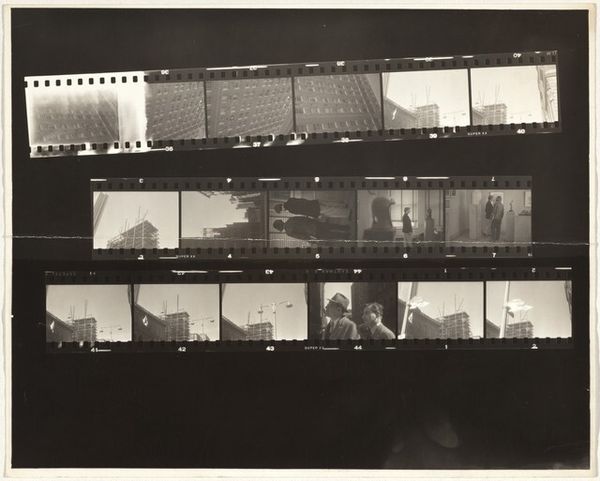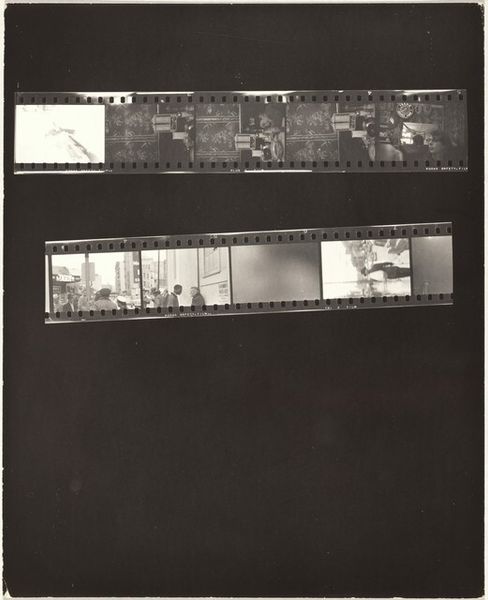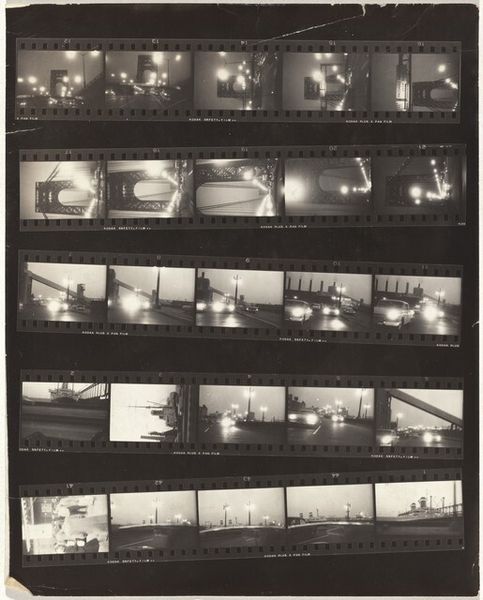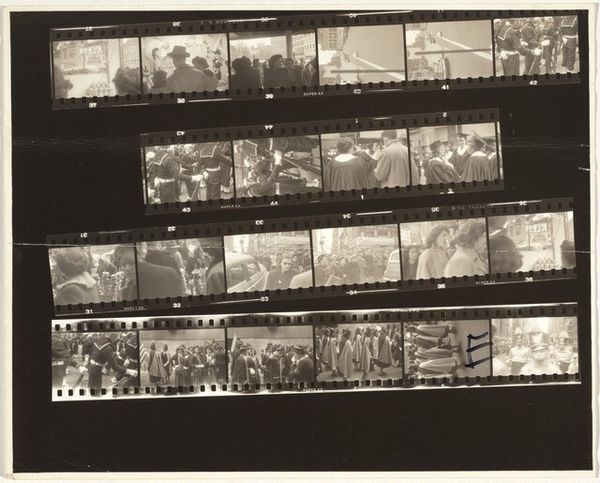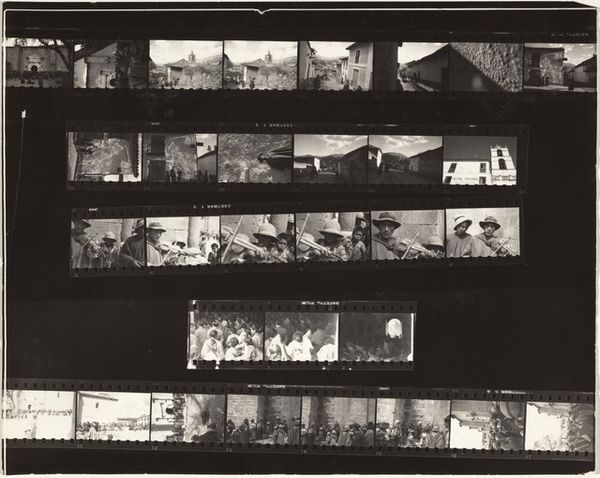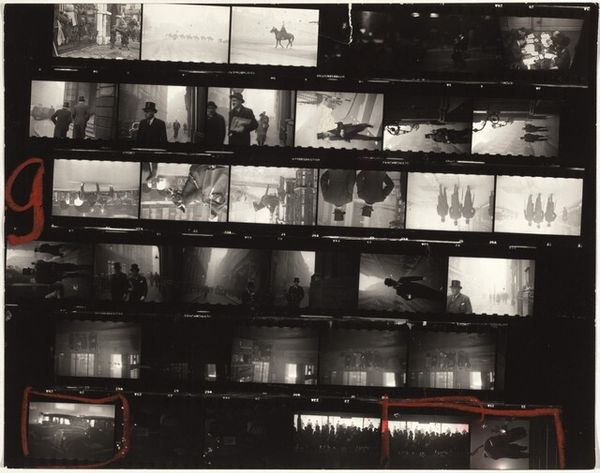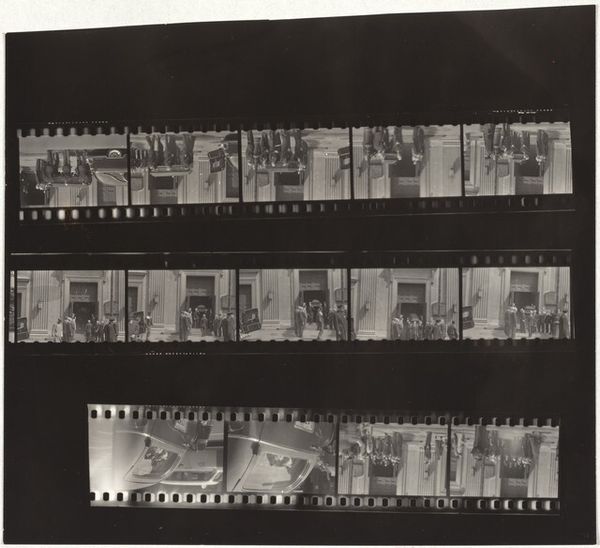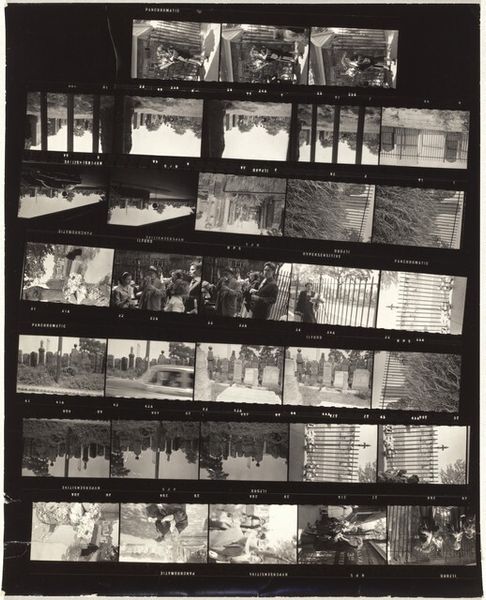
#
print photography
#
film photography
#
wedding photograph
#
photo restoration
#
wedding photography
#
ceremony
#
archive photography
#
couple photography
#
holiday photography
#
celebration photography
Dimensions: sheet: 20.3 x 25.3 cm (8 x 9 15/16 in.)
Copyright: National Gallery of Art: CC0 1.0
Curator: This photographic contact sheet by Robert Frank, titled "John Grillo mural--Miles Forst exhibition no number," dates from around the 1950s. It captures images from what appears to be an exhibition. Editor: At first glance, it strikes me as raw, unvarnished. The composition is very matter-of-fact—these strips of frames, clearly untouched from their original form. The lack of manipulation draws my eye right into the scene itself, the artworks hanging in that gallery. Curator: Precisely. Frank’s documentarian style serves a purpose. He isn’t trying to create a glamorous image; he’s recording a moment within a particular artistic milieu. We get a glimpse into the exhibition of Miles Forst’s work, including a mural by John Grillo. It is not about artistry, but capturing something as it is; the moment as record. Editor: And that’s where it becomes fascinating for me. Looking at these frames, you see more than just art on walls. It's about production, really. Each little photo reminds you of film, light-sensitive emulsion, the developing process itself...you begin to think of the lab technician and camera. Even though we're viewing this end result, it’s born of very hands-on physical work, not some detached, high-art gesture. Curator: Definitely. I think Frank’s sheet is capturing a cultural snapshot, too. Think of what exhibitions signified then – exclusive access, tastemakers congregating, an ecosystem where artistic reputations were cemented or destroyed. His capturing of an event can inform an assessment on art-world hierarchies. Editor: That's the key, that image of access. Viewing the scene with that eye towards those in power...But consider this photograph too – raw materials, the celluloid. We need to ask what value society placed (or continues to place) on images and art. Curator: I concur that seeing how Frank, through his lens, provides us invaluable material through which to investigate those very processes is insightful. Editor: Exactly, we’re witnessing how an image's physical makeup contributes just as meaningfully as its content. Curator: True. Robert Frank shows a glimpse not just into art itself but also the conditions of art appreciation at that time. Editor: So yes, what begins as a simple photograph can truly show a layered examination.
Comments
No comments
Be the first to comment and join the conversation on the ultimate creative platform.

